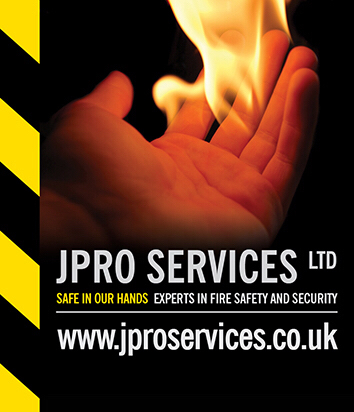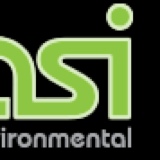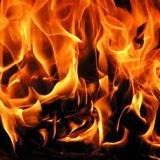Introduction
-
Responsible person (e.g. employer) or person having control of the premises (CP Name):
-
Address of premises:
-
Person(s) consulted (CP Staff Name & Position):
-
Assessor:
-
Date of fire risk assessment:
-
Date of previous fire risk assessment:
-
Suggested date for review:
THE PREMISES
-
Number of floors at ground level and above:
-
Number of floors entirely below ground level:
-
Floors on which car parking is provided:
-
Approximate floor area (per floor):
-
Approximate floor area (total):
-
Approximate floor area (ground floor):
-
Details of construction and layout:
-
Occupancy:
THE OCCUPANTS
-
Approximate maximum number of employees at any one time:
-
Approximate maximum number of other occupants at any one time:
-
Approximate total number of people present in the building at any one time:
OCCUPANTS ESPECIALLY AT RISK FROM FIRE
-
Sleeping occupants:
-
Disabled employees:
-
Other disabled occupants:
-
Occupants in remote areas and lone workers:
-
Young persons employed:
-
Others:
-
Comments(number of staff on in the day and at night):
FIRE LOSS EXPERIENCE
-
FIRE LOSS EXPERIENCE:
-
Other relevant information:
RELEVANT FIRE SAFETY LEGISLATION
-
The following fire safety legislation applies to these premises:
- The Regulatory Reform (Fire Safety) Order 2005 (as amended)
-
The above legislation is enforced by which Fire and Rescue Authority:
- Avon
- Cornwall
- Devon & Somerset
- Dorset & Wiltshire
- Gloucestershire
- Buckinghamshire
- East Sussex
- Hampshire & Isle of Wight
- Kent
- Oxfordshire
- Royal Berkshire
- Surrey
- West Sussex
- Cleveland
- Durham and Darlington
- Northumberland
- Tyne and Wear
- Humberside
- North Yorkshire
- South Yorkshire
- West Yorkshire
- Cheshire
- Cumbria
- Lancashire
- Greater Manchester
- Merseyside
- Bedfordshire
- Cambridgeshire
- Essex
- Hertfordshire
- Norfolk
- Suffolk
- Derbyshire
- Leicestershire
- Lincolnshire
- Nottinghamshire
- Northamptonshire
- Hereford and Worcester
- Shropshire
- Staffordshire
- Warwickshire
- West Midlands
- Mid and West Wales
- North Wales
- South Wales
- London Fire Brigade
-
Other legislation that makes significant requirements for fire precautions in these premises (other than the Building Regulations 2010 and any relevant Local Act):
- The Housing Act 2004 & Health & Safety at Work Act 1974
-
The other legislation referred to above is enforced by:
- Health & Safety at Work Act 1974 is enforced by the Local Authority & the Health and Safety Executive. The Housing Act 2004 is enforced by the Local Authority
-
Is there an alterations notice in force?
-
Relevant information and deficiencies observed:
FIRE HAZARDS AND THEIR ELIMINATION OR CONTROL
ELECTRICAL SOURCES OF IGNITION
-
Are reasonable measures taken to prevent fires of electrical origin?
-
Are fixed installations periodically inspected and tested?
-
Is portable appliance testing carried out?
-
Is there suitable control over the use of personal electrical appliances?
-
Is there suitable limitation of trailing leads and adapters?
-
Relevant information (including description of arrangements and deficiencies observed):
SMOKING
-
Are reasonable measures taken to prevent fires as a result of smoking?
-
Is smoking prohibited in the building?
-
Is smoking prohibited in appropriate areas?
-
Are there suitable arrangements for those who wish to smoke?
-
Did the smoking policy appear to be observed at time of inspection?
-
Relevant information (including description of arrangements and deficiencies observed):
ARSON
-
Does basic security against arson by outsiders appear reasonable?
-
Is there an absence of unnecessary fire load in close proximity to the premises or available for ignition by outsiders?
-
Relevant information (including description of arrangements and deficiencies observed):
PORTABLE HEATERS AND HEATING AND VENTILATION INSTALLATIONS
-
Is there satisfactory control over the use of portable heaters?
-
Are fixed heating and ventilation installations subject to regular maintenance?
-
Relevant information (including description of arrangements and deficiencies observed):
COOKING
-
Are reasonable measures taken to prevent fires as a result of cooking?
-
More specifically, are filters cleaned or changed and ductwork cleaned regularly?
-
Relevant information (including description of arrangements and deficiencies observed):
LIGHTNING
-
Does the building have a lightning protection system?
-
Relevant information and deficiencies observed:
HOUSEKEEPING
-
Is the overall standard of housekeeping <br>adequate?
-
Do combustible materials appear to be separated from ignition sources?
-
Is unnecessary accumulation or inappropriate storage of combustible materials or waste avoided?
-
Are gas and electricity intake/meter cupboards adequately secured and kept clear of combustible materials?
-
Relevant information (including description of arrangements and deficiencies observed):
HAZARDS INTRODUCED BY OUTSIDE CONTRACTORS AND BUILDING WORKS
-
Is there satisfactory control over works carried out in the building by contractors?
-
Relevant information (including description of arrangements and deficiencies observed):
DANGEROUS SUBSTANCES
-
Are the general fire precautions adequate to address the hazards associated with dangerous substances used or stored within the premises?
-
Relevant information (including description of arrangements and deficiencies observed):
OTHER SIGNIFICANT FIRE HAZARDS THAT WARRANT CONSIDERATION
-
Hazards:
-
Relevant information (including description of arrangements and deficiencies observed):
FIRE PROTECTION MEASURES
MEANS OF ESCAPE
-
Is the design and maintenance of the means of escape considered adequate?
-
Do staircase and exit capacities appear to be adequate for the number of occupants?
-
Is the design of the means of escape considered adequate?
-
Are travel distances reasonable?
-
Is there adequate provision of exits?
-
Do fire exits open in the direction of escape, where necessary?
-
Are there satisfactory arrangements for escape where revolving doors or sliding doors are used as exits?
-
Are escape routes unobstructed?
-
Is the fire-resisting construction which protects escape routes in good condition?
-
Are there reasonable arrangements for means of escape for disabled people?
-
Are fire-resisting doors maintained in sound condition and self-closing, where necessary?
-
Is the fire resistance of doors to meter cupboards/store rooms/plant rooms in the common areas considered adequate, and are they adequately secured and/or fitted with suitable self-closing devices?
-
Is the fire resistance of flat/bedroom entrance doors considered adequate, and are doors maintained in sound condition?
-
Are there adequate smoke control provisions to protect the common escape routes, where necessary?
-
Are all fire exits easily and immediately openable?
-
Relevant information (including description of arrangements and deficiencies observed):
MEASURES TO LIMIT FIRE SPREAD AND DEVELOPMENT
-
Is compartmentation of a reasonable standard?
-
Is there reasonable limitation of linings that might promote fire spread?
-
Where fire dampers are installed, are they accessible for inspection?
-
Are fire protected service risers, ducts and cupboards in a good state of repair and will they restrict the spread of fire and smoke?
-
Relevant information (including description of arrangements and deficiencies observed:
EMERGENCY ESCAPE LIGHTING
-
Has a reasonable standard of emergency escape lighting system been provided?
-
Relevant information (including description of arrangements and deficiencies observed):
FIRE SAFETY SIGNS AND NOTICES
-
Is there a reasonable standard of fire safety signs and notices?
-
Relevant information (including description of arrangements and deficiencies observed:
MEANS OF GIVING WARNING IN CASE OF FIRE
-
Is a reasonable fire detection and fire alarm system provided?
-
Is there remote transmission of alarm signals?
-
Where appropriate, are there adequate arrangements for silencing and resetting an alarm condition?
-
Where appropriate, has a fire alarm zone plan been provided?
-
Relevant information (including description of arrangements and deficiencies observed:
-
Relevant information on false alarm experience (if known):
MANUAL FIRE EXTINGUISHING APPLIANCES
-
Is there reasonable provision of manual fire extinguishing appliances?
-
What type(s) of appliances are provided?
-
Are all fire extinguishing appliances readily accessible?
-
Relevant information (including description of arrangements and deficiencies observed):
RELEVANT AUTOMATIC FIRE EXTINGUISHING SYSTEMS
-
Type of fixed system (sprinklers etc.):
-
Relevant information and deficiencies observed:
OTHER RELEVANT FIXED SYSTEMS AND EQUIPMENT
-
Type of fixed system (hose reels etc:
-
Are there appropriately sited facilities for electrical isolation of any photovoltaic (PV) cells, with appropriate signage, to assist the fire and rescue service?
-
Relevant information and deficiencies observed:
MANAGEMENT OF FIRE SAFETY
PROCEDURES AND ARRANGEMENTS
-
The competent person(s) appointed under Article 18 of the Fire Safety Order to assist the responsible person in undertaking the preventive and protective measures (i.e. relevant general fire precautions) is:
-
Fire safety at the premises is managed by:
-
Is there a suitable record of the fire safety arrangements?
-
Relevant information (including description of arrangements and deficiencies observed:
-
Evacuation strategy
-
Comment
-
Are procedures in the event of fire appropriate and properly documented, where appropriate?
-
Are there adequate procedures for investigating fire alarm signals?
-
Are there suitable arrangements for summoning the fire and rescue service?
-
Are there suitable arrangements to meet the fire and rescue service on arrival and provide relevant information, including that relating to hazards to firefighters?
-
Are there suitable arrangements for ensuring that the premises have been evacuated?
-
Is there a suitable fire assembly point(s)?
-
Are there adequate procedures for evacuation of any disabled people who are likely to be present?
-
Are PCFRAs (Person Centred Fire Risk Assessments) in place, or has each resident been assessed as not requiring one?
-
Are adequate controls in place for hoarding?
-
Relevant information (including description of arrangements and deficiencies observed):
-
Is someone nominated and trained to use fire extinguisher appliances?
-
If the premises are in multiple occupation, are there adequate arrangements for cooperation between dutyholders to ensure coordination of their fire safety arrangements?
-
Are there persons nominated to assist with evacuation, including evacuation of disabled people?
-
If there has been liaison with the local fire and rescue services, have details from enforcement notices been<br>resolved?<br>
-
Are routine in-house inspections of fire precautions undertaken (e.g. in the course of health and safety inspections)?
TRAINING AND DRILLS
-
Are all staff given adequate fire safety instruction and training?
-
Are they trained on induction?
-
Are they given periodic refresher training?
-
Are they given additional training to cover any specific roles and responsibilities?
-
Is the content of training provided considered adequate?
-
Relevant information (including description of arrangements and deficiencies observed):
-
Are fire drills carried out at appropriate intervals?
-
Relevant information (including description of arrangements and deficiencies observed):
-
When the employees of another employer (operatives) work in the premises, is appropriate information on fire risks and fire safety measures provided?
-
Relevant information (including description of arrangements and deficiencies observed):
TESTING AND MAINTENANCE
-
Is there adequate maintenance of the common parts /workplace?
-
Is weekly testing and periodic servicing of the fire detection and fire alarm system undertaken?
-
Are monthly and annual testing routines in place for the emergency escape lighting?
-
Is annual maintenance of fire extinguishing appliances undertaken?
-
Are six-monthly inspection and annual testing of rising mains undertaken?
-
Are weekly testing and periodic inspection of sprinkler installations undertaken?
-
Are routine checks of final exit doors and/or security fastenings undertaken?
-
Are annual inspection and testing of the lightning protection system undertaken?
-
Other relevant inspections or tests:
-
Relevant information (including description of arrangements and deficiencies observed):
RECORDS
-
Are there appropriate records of fire drills
-
Are there appropriate records of fire training
-
Are there appropriate records of fire alarm tests
-
Are there appropriate records of false alarms?
-
Are there appropriate records of emergency escape lighting tests?
-
Are there appropriate records of maintenance and testing of other fire protection systems and equipment?
-
Relevant information (including description of arrangements and deficiencies observed):
ENGAGEMENT WITH RESIDENTS
-
Has information on fire procedures been disseminated to residents?
-
Is fire safety information disseminated to residents?
-
Relevant information (including description of arrangements and deficiencies observed):
FIRE RISK ASSESSMENT
-
The following simple risk level estimator is based on a commonly used risk level estimator:
-
Taking into account the fire prevention measures observed at the time of this risk assessment, it is considered that the hazard from fire (likelihood of fire) at these premises is:
-
In this context, a definition of the above terms is as follows:
-
Taking into account the nature of the premises and the occupants, as well as the fire protection and procedural arrangements observed at the time of this fire risk assessment, it is considered that the consequences for life safety in the event of fire would be:
-
In this context, a definition of the above terms is as follows:
-
Accordingly, it is considered that the risk to life from fire at these premises is:
-
Comments













